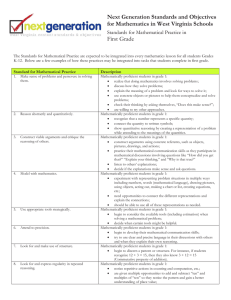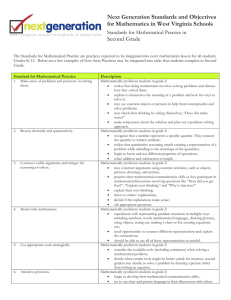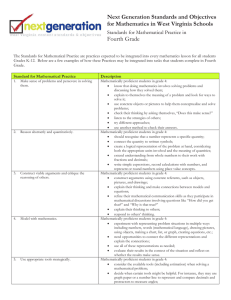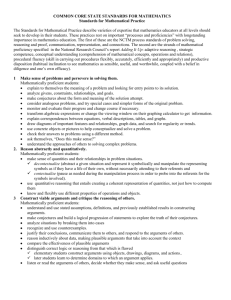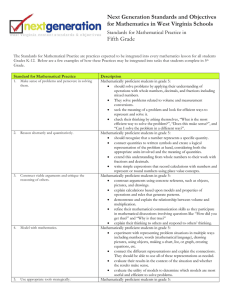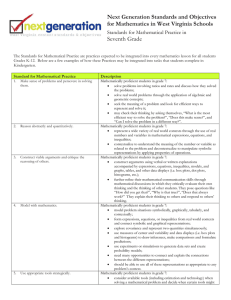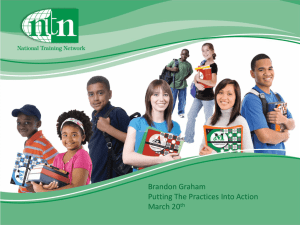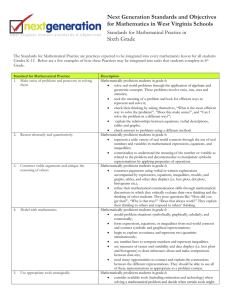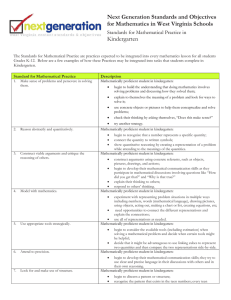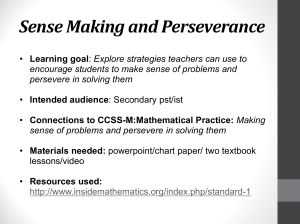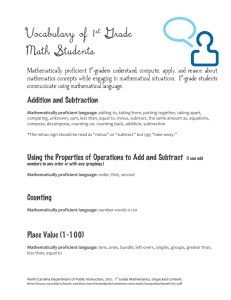K-12 Mathematics General Learning Outcomes
advertisement
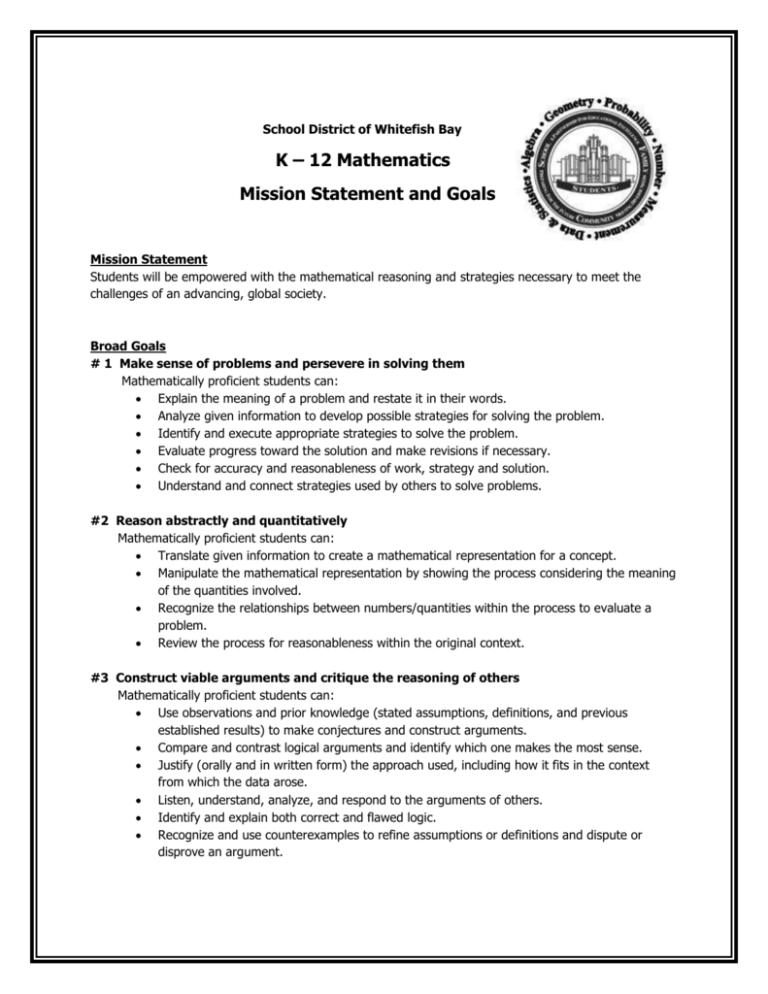
School District of Whitefish Bay K – 12 Mathematics Mission Statement and Goals Mission Statement Students will be empowered with the mathematical reasoning and strategies necessary to meet the challenges of an advancing, global society. Broad Goals # 1 Make sense of problems and persevere in solving them Mathematically proficient students can: Explain the meaning of a problem and restate it in their words. Analyze given information to develop possible strategies for solving the problem. Identify and execute appropriate strategies to solve the problem. Evaluate progress toward the solution and make revisions if necessary. Check for accuracy and reasonableness of work, strategy and solution. Understand and connect strategies used by others to solve problems. #2 Reason abstractly and quantitatively Mathematically proficient students can: Translate given information to create a mathematical representation for a concept. Manipulate the mathematical representation by showing the process considering the meaning of the quantities involved. Recognize the relationships between numbers/quantities within the process to evaluate a problem. Review the process for reasonableness within the original context. #3 Construct viable arguments and critique the reasoning of others Mathematically proficient students can: Use observations and prior knowledge (stated assumptions, definitions, and previous established results) to make conjectures and construct arguments. Compare and contrast logical arguments and identify which one makes the most sense. Justify (orally and in written form) the approach used, including how it fits in the context from which the data arose. Listen, understand, analyze, and respond to the arguments of others. Identify and explain both correct and flawed logic. Recognize and use counterexamples to refine assumptions or definitions and dispute or disprove an argument. #4 Model with mathematics Mathematically proficient students can: Use a variety of methods to model, represent, and solve real-world problems. Simplify a complicated problem by making assumptions and approximations. Interpret results in the context of the problem and revise the model if necessary. Choose a model that is both appropriate and efficient to arrive at one or more desired solutions. #5 Use appropriate tools strategically Mathematically proficient students can: Identify mathematical tools and recognize their strengths and weaknesses. Select and use appropriate tools to best model/solve problems. Use estimation to predict reasonable solutions and/or detect errors. Identify and successfully use external mathematical resources to pose or solve problems. Use a variety of technologies, including digital content, to explore, confirm, and deepen conceptual understanding. #6 Attend to precision Mathematically proficient students can: Understand symbols and use them consistently within the context of a problem. Calculate answers efficiently and accurately and label them appropriately. Formulate precise explanations (orally and in written form) using both mathematical representations and words. Communicate using clear mathematical definitions, vocabulary, and symbols. #7 Look for and make use of structure Mathematically proficient students can: Look for, identify, and accept patterns or structure within relationships. Use patterns or structure to make sense of mathematics. Analyze a complex problem by breaking it down into smaller parts. Reflect on the problem as a whole and shift perspective as needed. #8 Look for and express regularity in repeated reasoning Mathematically proficient students can: Recognize similarities and patterns in repeated trials with a process. Generalize the process to create a shortcut which may lead to developing rules or creating a formula. Evaluate the reasonableness of results throughout the mathematical process while attending to the details. #9 Make mathematical connections Mathematically proficient students can: Connect prior knowledge to similar situations and extend to novel situations. Relate mathematics to other subjects, real-world situations, and their own interests and experiences. Based on a collaborative project work with Cedarburg, Franklin, Fox Point-Bayside, Grafton, Greendale, Kettle Moraine, Menomonee Falls, Oconomowoc, Pewaukee, Waukesha, & Whitefish Bay School Districts and CESA 1
